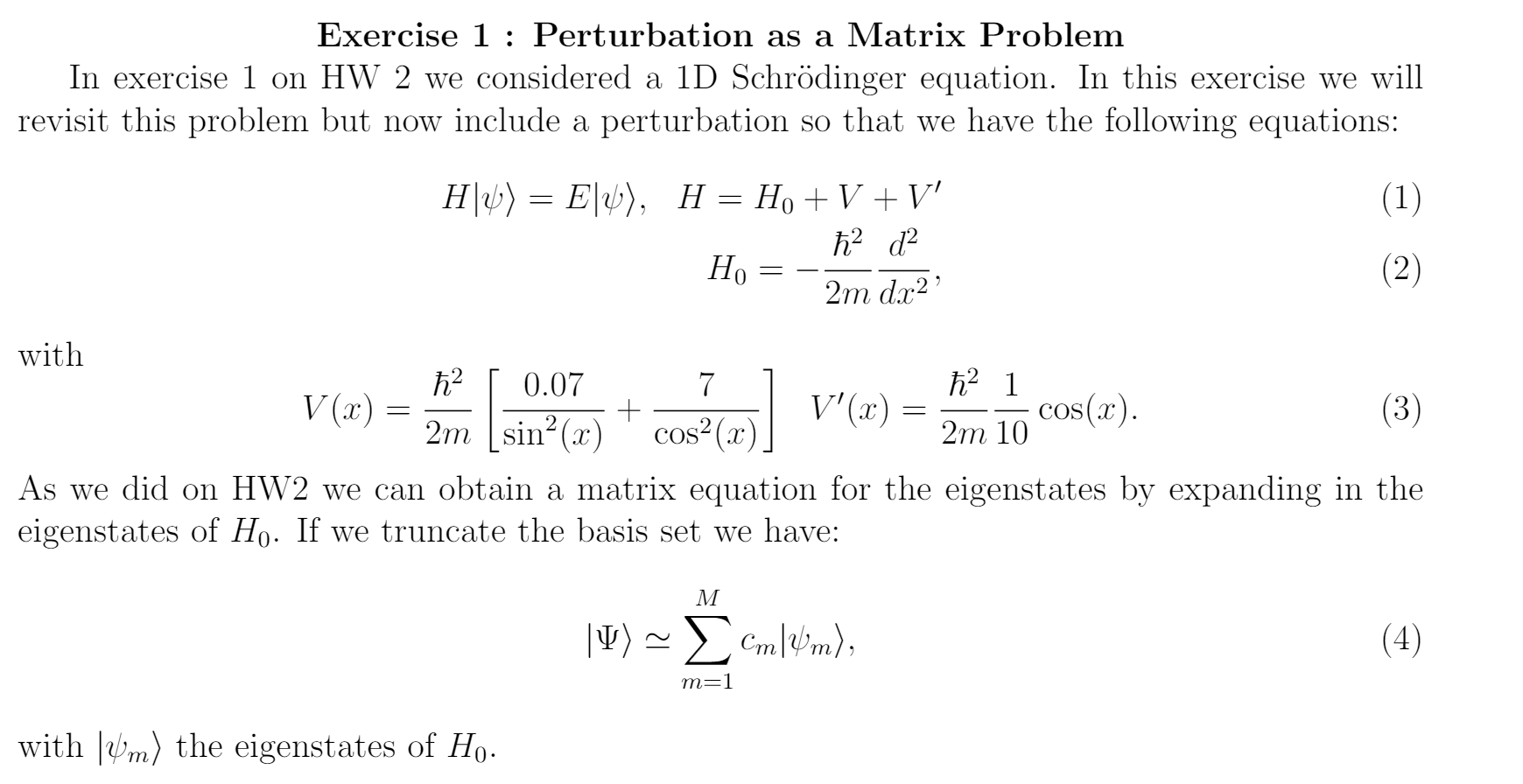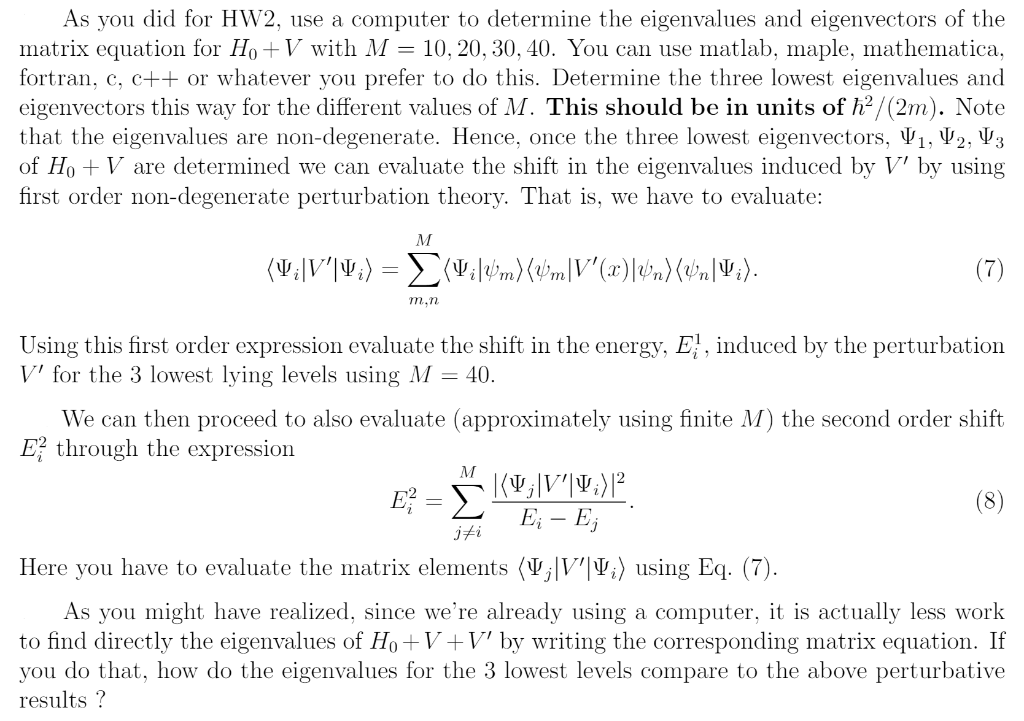Please write it for a c++ program. Thank you


Exercise 1 : Perturbation as a Matrix Problem In exercise 1 on HW 2 we considered a 1D Schrdinger equation. In this exercise we will revisit this problem but now include a perturbation so that we have the following equations: (1) H|4) = E(4), H = H. + V + V' 2 d2 2m dx2) Ho (2) with 2 0.07 7 h2 1 V(x) = + V'(x) = cos(2) (3) 2m (sin(x) cos2 (30) 2m 10 As we did on HW2 we can obtain a matrix equation for the eigenstates by expanding in the eigenstates of Ho. If we truncate the basis set we have: Listen M |V) - cm|4m); (4) m=1 with Um) the eigenstates of Ho. As you did for HW2, use a computer to determine the eigenvalues and eigenvectors of the matrix equation for Ho +V with M = 10, 20, 30, 40. You can use matlab, maple, mathematica, fortran, c, c++ or whatever you prefer to do this. Determine the three lowest eigenvalues and eigenvectors this way for the different values of M. This should be in units of h/(2m). Note that the eigenvalues are non-degenerate. Hence, once the three lowest eigenvectors, V1, V2, V3 of H. + V are determined we can evaluate the shift in the eigenvalues induced by V' by using first order non-degenerate perturbation theory. That is, we have to evaluate: M (V;\V'\V;) = (Vilm){Um|V'(x)] ) \\;). (7) m,n M Using this first order expression evaluate the shift in the energy, E), induced by the perturbation V' for the 3 lowest lying levels using M = 40. We can then proceed to also evaluate (approximately using finite M) the second order shift E} through the expression ? = |(\;\V'|V;) (8) E; E; iti Here you have to evaluate the matrix elements (V;\V'|V;) using Eq. (7). As you might have realized, since we're already using a computer, it is actually less work to find directly the eigenvalues of Ho+V+V' by writing the corresponding matrix equation. If you do that, how do the eigenvalues for the 3 lowest levels compare to the above perturbative results ? Exercise 1 : Perturbation as a Matrix Problem In exercise 1 on HW 2 we considered a 1D Schrdinger equation. In this exercise we will revisit this problem but now include a perturbation so that we have the following equations: (1) H|4) = E(4), H = H. + V + V' 2 d2 2m dx2) Ho (2) with 2 0.07 7 h2 1 V(x) = + V'(x) = cos(2) (3) 2m (sin(x) cos2 (30) 2m 10 As we did on HW2 we can obtain a matrix equation for the eigenstates by expanding in the eigenstates of Ho. If we truncate the basis set we have: Listen M |V) - cm|4m); (4) m=1 with Um) the eigenstates of Ho. As you did for HW2, use a computer to determine the eigenvalues and eigenvectors of the matrix equation for Ho +V with M = 10, 20, 30, 40. You can use matlab, maple, mathematica, fortran, c, c++ or whatever you prefer to do this. Determine the three lowest eigenvalues and eigenvectors this way for the different values of M. This should be in units of h/(2m). Note that the eigenvalues are non-degenerate. Hence, once the three lowest eigenvectors, V1, V2, V3 of H. + V are determined we can evaluate the shift in the eigenvalues induced by V' by using first order non-degenerate perturbation theory. That is, we have to evaluate: M (V;\V'\V;) = (Vilm){Um|V'(x)] ) \\;). (7) m,n M Using this first order expression evaluate the shift in the energy, E), induced by the perturbation V' for the 3 lowest lying levels using M = 40. We can then proceed to also evaluate (approximately using finite M) the second order shift E} through the expression ? = |(\;\V'|V;) (8) E; E; iti Here you have to evaluate the matrix elements (V;\V'|V;) using Eq. (7). As you might have realized, since we're already using a computer, it is actually less work to find directly the eigenvalues of Ho+V+V' by writing the corresponding matrix equation. If you do that, how do the eigenvalues for the 3 lowest levels compare to the above perturbative results








